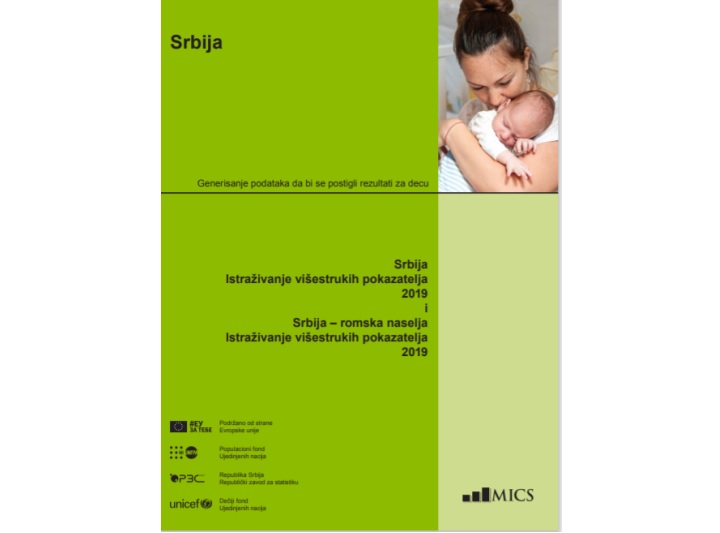
The Statistical Office of the Republic of Serbia and UNICEF have issued today the new data on the position of women and children in Serbia, collected in the Multiple Indicator Cluster Survey on the position of women and children in 2019 (MICS 6).
The data were collected with the financial assistance of UNICEF, the Delegation of the European Union to the Republic of Serbia, the United Nations Population Fund (UNFPA) and the Government of the Republic of Serbia.
The obtained data indicate progress in key areas, including breastfeeding and attending preschool education, but also stagnation in the areas of child marriage and violent disciplining of children.
“In the period from September to December 2019, the Statistical Office of the Republic of Serbia conducted MICS 6 as two surveys - one survey was based on the sample of 8,100 households selected for the national representative sample, and another was based on the sample of 1,934 households in Roma settlements,” said Mr. Miladin Kovacevic, Director of the Statistical Office of the Republic of Serbia.
“Serbia has come a long way in addressing inequalities. The majority of children see their rights fulfilled. Reaching the most vulnerable and excluded children is often the most challenging part of the journey, but also the most critical one. This is why the MICS survey is so useful – it helps everyone track progress and identify trends – both positive and negative, in 5-year intervals. The government, businesses, and civil society now have a clear picture of where targeted action is needed to build on past successes and increase investments to reduce disparities,” stated Ms. Deyana Kostadinova, UNICEF Representative in Serbia.
“This survey gives useful insight on how Roma population lives in comparison with the rest of Serbia, providing an evidence-based approach to implement better policies. In particular, it will help Serbian policy makers with solid and qualitative data to indicate priorities and make decisions. The indicators used and results obtained with this research are similar to the ones used by the EU to monitor progress and direct our support for Serbia’s accession path. Accurate data, collected and analysed in line with the EU and worldwide accepted methodologies will enable comparing key areas, including woman and child protection, education, employment, housing, and gender equality, and thus allocating the necessary support in the most effective ways. The European Union is a partner of the Serbian Government in such process. With a current granting of EUR 30 million for the implementation of Roma inclusion projects, the EU is Serbia's main donor also in the area of Roma development,” said Ambassador Sem Fabrizi, Head of the Delegation of the European Union to the Republic of Serbia.
“There are good indicators and data in many areas, such as skilled attendance at birth which is important for all women in Serbia. However, we can see that the situation remains largely unchanged compared to 2014 in most domains related to sexual and reproductive health. Use of modern contraception methods remains low and persistent inequalities for women in rural as well as Roma settlements are still there. We need to do more to dismantle barriers, stigma and taboos around women’s health,” said John Kennedy Mosoti, UNFPA Country Director for Serbia.
Galery